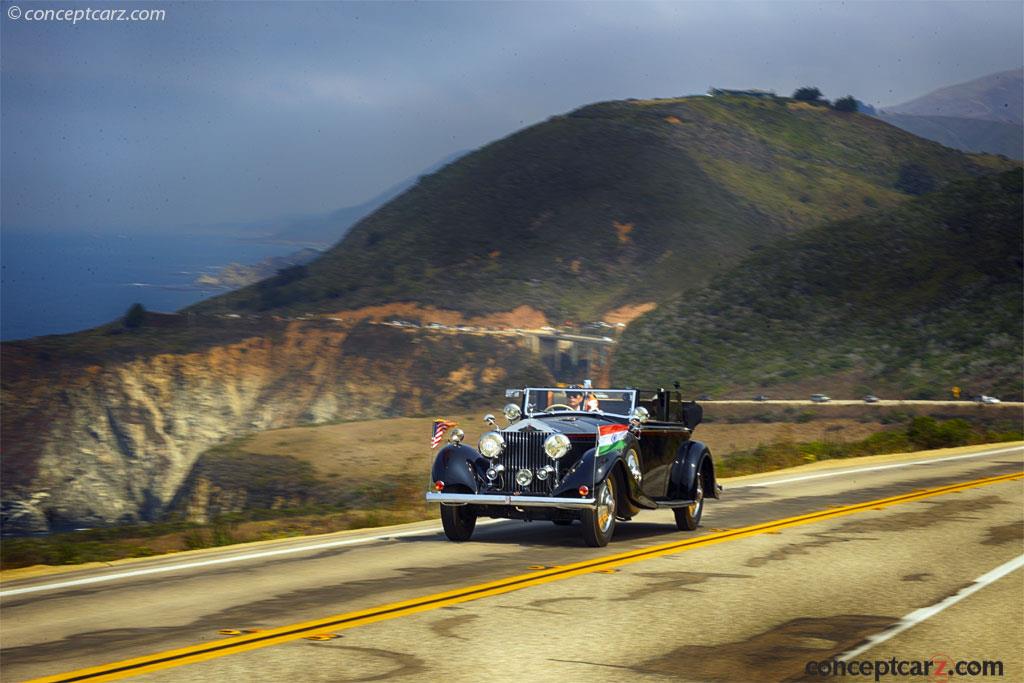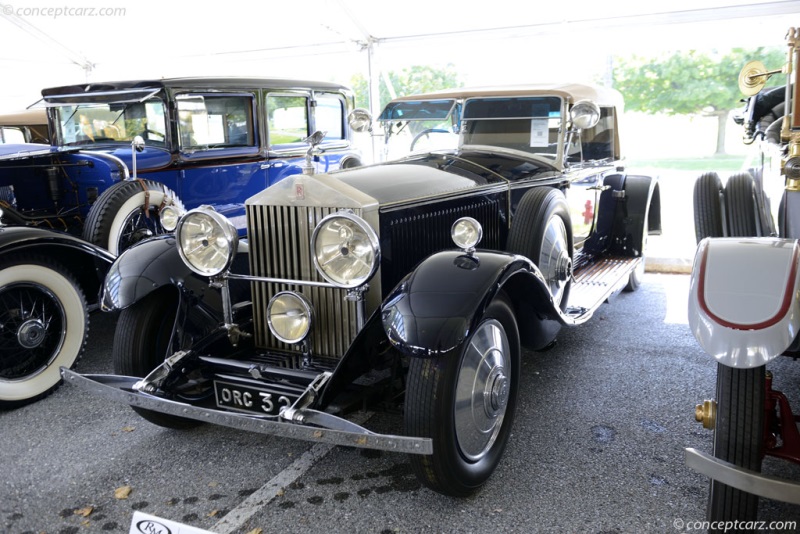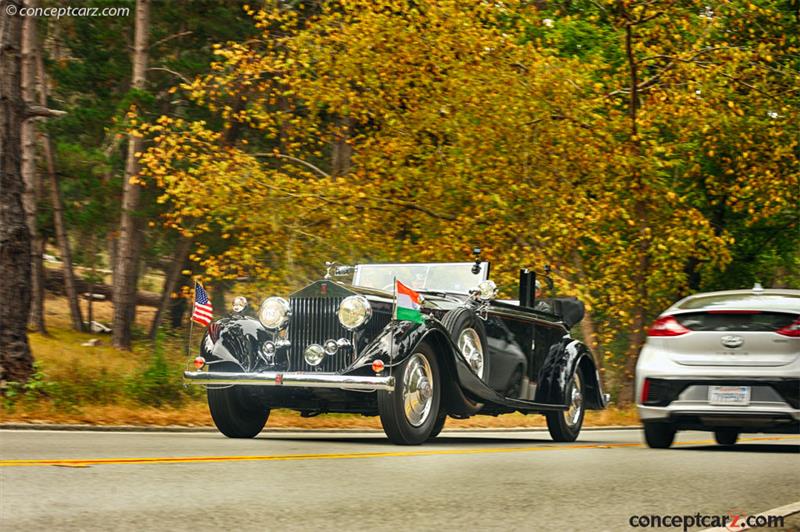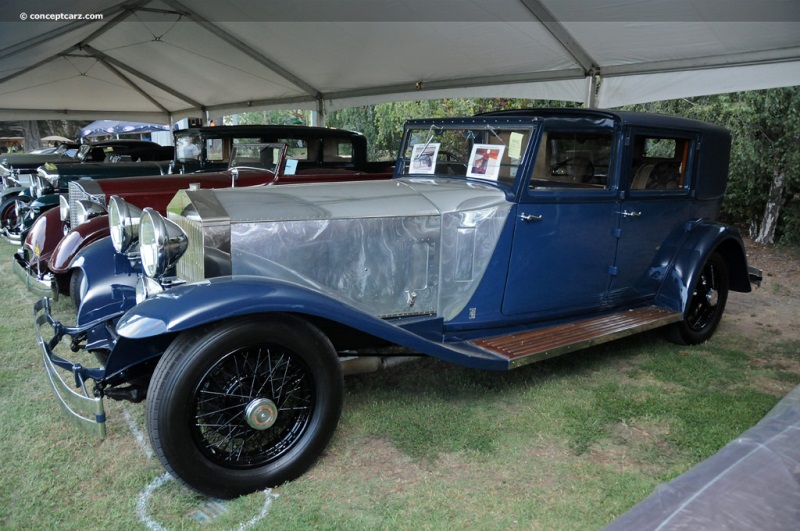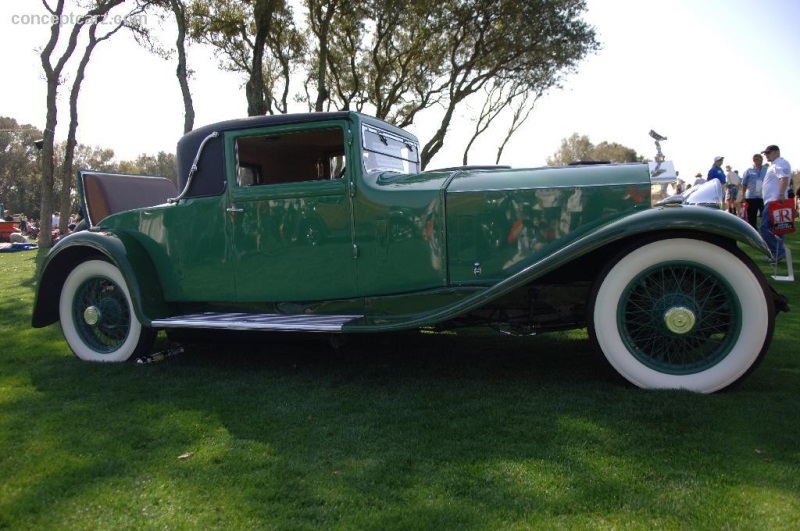1929 Rolls-Royce Phantom II Navigation
The Rolls-Royce Phantom II replaced the 'New Phantom' (retrospectively dubbed the Phantom I) in 1929 and was the third and last of Rolls-Royce's 40/50 models. It was powered by a refined version of its predecessor's 7,668cc straight-six powerplant with a new crossflow cylinder head and installed in an all-new chassis with semi-elliptic springs in the front and back, adjustable shock absorbers, and the rear axle underslung. The improvements allowed the frame to ride lower than before, improving the handling and giving it a modern appearance. The four-speed manual transmission was now bolted directly to the engine, with power being transmitted to the rear wheels via an open driveshaft and hypoid bevel axle. The Bijur centralized lubrication system used on the US-specification Phantom Is was adopted for Phantom II chassis from both sides of the Atlantic, and the all-wheel servo-assisted brakes from the Phantom I (and option on the 40/50 from 1923) provided the stopping power. Production lasted from 1929 through 1936 with 1,680 examples produced (including 278 Continentals), fewer than the 3,512 examples of the 40/50 Phantom (Phantom I) of 1925 to 1931, and less than the 7,874 examples of the original 40/50 (Silver Ghost) built from 1906 through 1926. 
Imperial Cabriolet by D'Ieteren
Chassis #: 127XJ
Engine #: JX45
View info and history
Auction entries : 5The Silver Ghost had a 135.5-inch wheelbase chassis before moving to a 143.5-inch platform in 1913 (a 144- and a 150.5-inch platform was also available from 1923). The Phantom I had a 143.5-inch wheelbase (U.S. destined LWB cars had a 146.5-inch wheelbase and the long-wheelbase UK versions measured 150.5-inches). Powering the Phantom I was a 7,668cc (7.7-liter) inline-6 cylinder engine constructed with a one-piece cylinder head with overhead valve operation, new combustion chambers, manifold improvements, and a dual ignition system. Its chassis used semi-elliptical springs on the front axle and cantilever springs in the rear, and a servo-assistance braking system licensed from Hispano-Suiza was placed at all four-wheels. Although the Phantom I had better acceleration than the Silver Ghost, its chassis lacked rigidity, particularly with the adoption of front-wheel brakes. The Phantom II continued to use the pushrod Overhead Valve, water-cooled, straight-6 engine from its predecessor, but unlike the previous 40/50 hp models, the engine was bolted directly to the four-speed manual transmission. It had two blocks of three and a one-piece aluminum head common to both blocks and crankcase with 7,668cc displacement. The magneto/coil dual ignition system remained the same as on the Phantom I. The combustion chambers were redesigned and the head was now of the cross-flow type, with inlet and exhaust manifolds positioned on opposite sides. Beginning in 1932, synchromesh was added on gears 3 and 4, and on gear 2 in 1935. While earlier 40/50 hp models used a torque tube from a remotely mounted gearbox to transmit power to the rear wheels, the Phantom II employed an open driveshaft, hypoid bevel final drive, and Hotchkiss drive. Unlike its predecessor, which inherited its underpinnings from the preceding 40/50hp model, the Silver Ghost, the Phantom II employed an entirely new chassis laid out along the lines of that of the smaller 20hp Rolls-Royce. The Phantom II rested on a standard 150-inch wheelbase or an optional short-wheelbase version measuring 144-inches used for the Continental models. The new low-slung frame, with its radiator set far back, enabled coachbuilders to body the car in the modern idiom, creating sleeker designs than the upright ones of the past. The refinements made to the engine, transmission, chassis, and suspension system provided the Phantom II with improved handling characteristics and an increase in power, and reputedly the last model that Sir Frederick Henry Royce designed himself prior to his death in 1933. Phantom II Continental
Rolls-Royce produced 278 examples of the Phantom II Continental between 1929 and 1935. The purpose-built and sportier Continental models were intended for wealthy and adventurous owners who chose to drive their Rolls-Royce rather than be chauffeured. It debuted in late 1930, with H.I.F. 'Ivan' Evernden collaborating in its development with Henry Royce. Evernden, a body designer, had created a one-off short-wheelbase Phantom with a tuned engine, a stiffer five-leaf suspension, and designated 26EX. Its four-seat lightweight coachwork was built by Barker as a close-coupled saloon. The Rolls-Royce sales department initially showed no interest in its production, but after it won Grand Prix d'Honneur at the 1930 Biarritz Grand Concours d'Elegance, the sales department had a change of heart and put it into production.
Imperial Cabriolet by D'Ieteren
Chassis #: 127XJ
Engine #: JX45
View info and history
Auction entries : 5The Continental built by Rolls-Royce rested on the short-wheelbase platform and received a modified engine equipped with a higher-lift camshaft and increased compression, a taller rear-axle ratio, flatter springs for a lower stance, a raked steering column, and twin Hartford auxiliary dampers upfront for ride control. The Phantom II Continental was capable of speeds approaching 100 mph. They were more expensive, sportier, and rare, and were designed for high-speed, long-distance touring, and delivered performance and panache. They were perfectly suited for daring coachwork, wearing the iconic Rolls-Royce radiator shell in line with the front axle and a dramatically long hood. The custom lightweight coachwork was among the most inspired and visually stimulating body designs ever to emanate from that era, and the Continentals were among the most powerful cars of their time. The Rolls-Royce advertising department pronounced the venerated firm's disposition towards the model as follows, 'The Rolls-Royce Phantom II Continental is specially produced for fast touring abroad, where better facilities exist than in Great Britain for high speeds over long distances.'Production
The Springfield, Massachusetts factory closed in 1931, corresponding to the end of production of the US-market Phantom I. Thus, all Phantom II rolling chassis were constructed at Rolls-Royce's factory in Derby including two US-market series, AJS and AMS. Rolls-Royce constructed the chassis and mechanical parts while the body was constructed, to the buyer's preferences, by outside coachbuilders. The list of craftsmen who bodied the Phantom II includes brewster, Henley, Hooper, Park Ward, Carlton, Mulliner, and Thrupp & Maberly.
by Daniel Vaughan | Mar 2021
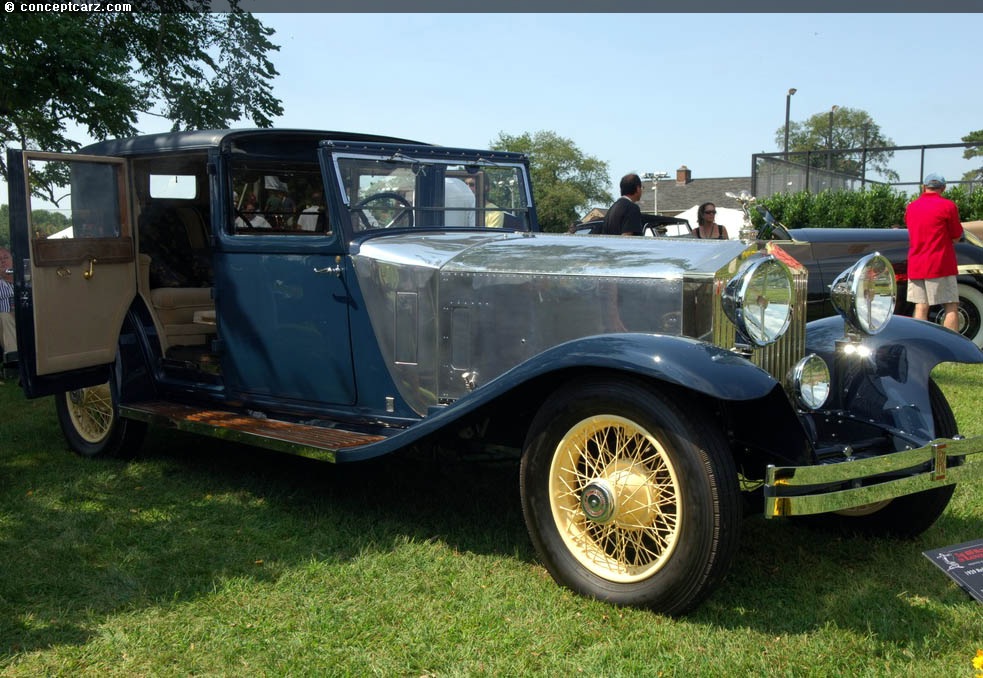
Imperial Cabriolet by D'Ieteren
Chassis #: 127XJ
Engine #: JX45
View info and history
Auction entries : 5
Rolls-Royce produced 278 examples of the Phantom II Continental between 1929 and 1935. The purpose-built and sportier Continental models were intended for wealthy and adventurous owners who chose to drive their Rolls-Royce rather than be chauffeured. It debuted in late 1930, with H.I.F. 'Ivan' Evernden collaborating in its development with Henry Royce. Evernden, a body designer, had created a one-off short-wheelbase Phantom with a tuned engine, a stiffer five-leaf suspension, and designated 26EX. Its four-seat lightweight coachwork was built by Barker as a close-coupled saloon. The Rolls-Royce sales department initially showed no interest in its production, but after it won Grand Prix d'Honneur at the 1930 Biarritz Grand Concours d'Elegance, the sales department had a change of heart and put it into production.
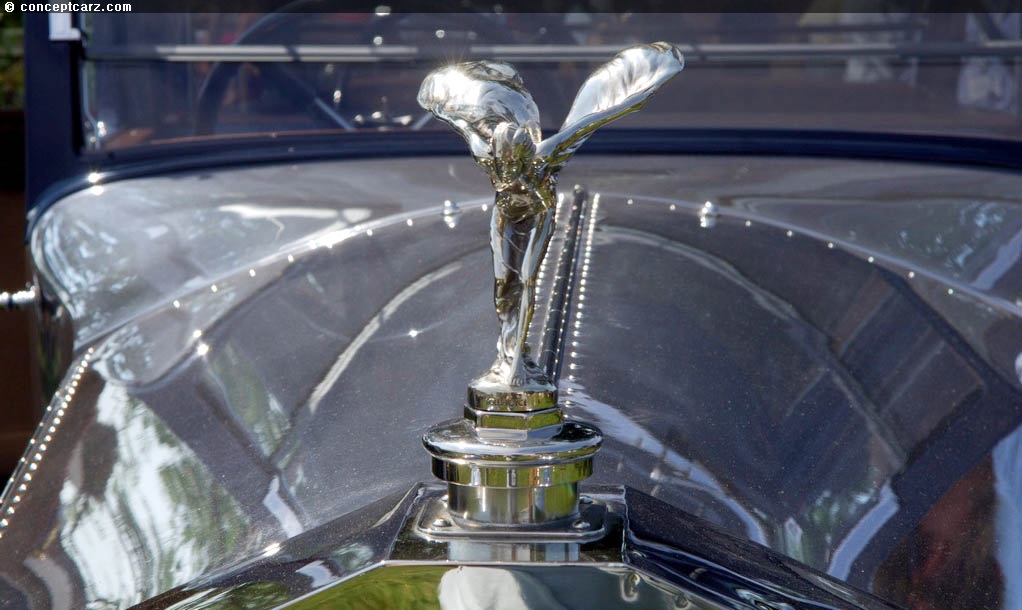
Imperial Cabriolet by D'Ieteren
Chassis #: 127XJ
Engine #: JX45
View info and history
Auction entries : 5
The Springfield, Massachusetts factory closed in 1931, corresponding to the end of production of the US-market Phantom I. Thus, all Phantom II rolling chassis were constructed at Rolls-Royce's factory in Derby including two US-market series, AJS and AMS. Rolls-Royce constructed the chassis and mechanical parts while the body was constructed, to the buyer's preferences, by outside coachbuilders. The list of craftsmen who bodied the Phantom II includes brewster, Henley, Hooper, Park Ward, Carlton, Mulliner, and Thrupp & Maberly.
by Daniel Vaughan | Mar 2021
Related Reading : Rolls-Royce Phantom II / Phantom II Continental History
The Phantom II was the first completely new car since the 20HP seven years earlier. The Phantom II was still rated 4050 HP but was lower and the springing half-elliptic all around. The car, although to Royces design and specification, was mainly the work of his West Wittering design team and included many innovations and a redesigned engine that, with the gearbox, was now one unit. The introduction....
Continue Reading >>
Continue Reading >>
Related Reading : Rolls-Royce Phantom II / Phantom II Continental History
The Rolls-Royce Phantom II was very similar to the Phantom I in many ways, but brought improvements such as a higher horsepower rating and the removal of the traditional torque-tube drive. Instead, the engine and gearbox were constructed in unit with each other rather than being separate. The Autovac was now using an engine-driven pump. A new water-heated induction system was used. The Battery....
Continue Reading >>
Continue Reading >>
- 1929 Rolls-Royce Phantom II Menu
- Article
- Image gallery
- Valuation
- Specifications
- Profiles
- Production figures
1929 Rolls-Royce Phantom II Vehicle Profiles
Recent Vehicle Additions
Performance and Specification Comparison
Price Comparison
Phantom II / Phantom II Continental Specification Comparison by Year
Year
Production
Wheelbase
Engine
Prices
144.00 in., 150.00 in.
6 cyl., 467.93 CID., 108.00hp
6 cyl., 467.93 CID., 120.00hp
6 cyl., 467.93 CID., 120.00hp
$9,500 - $9,500
Related Automotive News

The Alfa Romeo 8C 2900B Best of Show at Pebble Beach
The Pebble Beach Concours really likes the Alfa Romeo 8C 2900B. The Alfa Romeo 8C was probably one of the most technically advanced, modern, and compelling sports car that money could buy in the 1930s. In 2008 an Alfa Romeo 8C 2900 B Corto...

Alfa Romeo Named Best of Show at the 68th Pebble Beach Concours d'Elegance
Touring-Bodied Alfa Romeo 8C 2900B Named Best of Show at the 68th Pebble Beach Concours dElegance
PEBBLE BEACH, Calif. (August 26, 2018) — After an intense competition that drew diverse cars from around the globe, the coveted gold Best of Show...

Fearsome and Solidly Original 1971 Hemi Challenger a Feature at Russo and Steele's Scottsdale Auction Event
Scottsdale, Arizona (January 3rd, 2017) – The Chrysler E-bodies might have been the last to enter Detroits pony car game. Though critics argue that the best were saved for last with these cars, making their introduction more than five years after...

AUCTIONS AMERICA KICKS OFF ITS 2016 SEASON WITH $20 MILLION IN SALES AND 40 PERCENT NEW BIDDERS AT FORT LAUDERDALE
Auctions Americas 14th annual Fort Lauderdale collector car auction generates %2420 million in sales
Diverse top-sellers list led by 1971 Ferrari 365 GTB4 Daytona at %24649,000
Rare American muscle and desirable Mercedes-Benzes attract significan...

Auctions America Readies for Auburn Spring Collector Car Weekend
A Spring tradition, Auctions Americas popular Auburn Spring Collector Car Weekend returns May 7 – 9 to Indianas Auburn Auction Park
Multi-day auction lifts gavel on diverse roster of some 500 quality vehicles
Sale highlights include an immacu...
